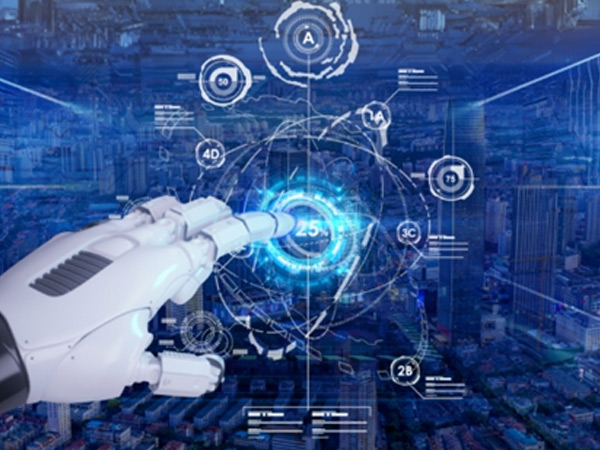The consumer electronics sector has gradually warmed up this year, particularly with the recent influence of the Huawei supply chain concept, leading to strong performance in the consumer electronics sector. It is expected that the new cycle of consumer electronics recovery this year will increase demand for laser-related equipment.
Consumer Electronics Downturn Nearing Its End
In recent years, the concept of "industry cycles" has garnered significant attention. Experts suggest that, just like economic development, specific industries also experience cycles. Over the past two years, much discussion has centered on the consumer electronics cycle. Consumer electronics, being personal end-user products, are closely tied to consumers. The rapid pace of product updates, overcapacity, and extended replacement times for consumer products have led to a slump in the consumer electronics market. This includes declines in shipments of display panels, smartphones, personal computers, and wearable devices, marking the downturn phase of the consumer electronics cycle.
Apple's decision to shift some product assembly to countries like India has exacerbated the situation, causing significant order reductions for companies in the Chinese Apple supply chain. This has impacted businesses specializing in optical lenses and laser products. A major laser company in China that previously benefited from Apple's laser marking and precision drilling orders has also felt the effects in recent years.
In the past few years, semiconductors and integrated circuit chips have become hot topics due to global competition. However, the downturn in the consumer electronics market, the primary market for these chips, has tempered expectations for rising chip demand.
For an industry to reverse from a downturn to an upturn, three conditions are required: a normal social environment, breakthrough products and technologies, and meeting mass market demands. The pandemic created an abnormal social environment, with policy constraints severely impacting consumption. Despite some companies launching new products, there were no significant technological breakthroughs.
However, industry experts believe that 2024 could see the consumer electronics industry bottoming out and rebounding.

Huawei Sparks Electronics Craze
Consumer electronics undergo a technological iteration every decade, often leading to a rapid growth period of 5 to 7 years in the hardware industry. In September 2023, Huawei unveiled its highly anticipated new flagship product, the Mate 60. Despite facing significant chip restrictions from Western countries, the release of this product has caused a stir in the West and led to severe shortages in China. To meet market demands, orders for Huawei have surged, revitalizing some Apple-linked enterprises.
After several quarters of silence, consumer electronics may re-enter the spotlight, potentially triggering a resurgence in related consumption. In recent years, artificial intelligence (AI) technology has gained widespread popularity globally, developing rapidly. The next step for consumer electronics products is likely to incorporate the latest AI technology, breaking through the limitations and functions of previous products, and thus initiating a new cycle in consumer electronics.

Precision Laser Processing Boosts Consumer Electronics Upgrade
Following the release of Huawei's new flagship device, many netizens are curious about whether laser-listed companies are entering the Huawei supply chain. Laser processing technology plays a crucial role in the fabrication of consumer electronic hardware, primarily in precision cutting, drilling, welding, and marking applications.
Many components of consumer electronics are small in size and require high precision, making mechanical processing impractical. Laser non-contact processing is necessary. Currently, ultrafast laser technology is widely used in circuit board drilling/cutting, cutting of thermal materials and ceramics, and particularly in precision cutting of glass materials, which has matured considerably.
From the early glass lenses of mobile phone cameras to waterdrop/notch screens and full-screen glass cutting, laser precision cutting has been adopted. Given that consumer electronic products mainly use glass screens, there is a huge demand for this, yet the penetration rate of laser precision cutting remains low, with most still relying on mechanical processing and polishing. There is still significant room for the development of laser cutting in the future.
Precision laser welding is widely used in consumer electronics applications, from soldering tin materials to soldering mobile phone antennas, integral metal casing connections, and charging connectors. Laser precision spot welding has become the preferred application for soldering consumer electronic products due to its high quality and fast speed.
Although laser 3D printing has been less prevalent in consumer electronics applications in the past, it is now worth paying attention to, especially for titanium alloy 3D printed parts. There are reports that Apple is testing the use of 3D printing technology to produce steel chassis for its smartwatches. Once successful, 3D printing may be adopted for titanium alloy components in tablets and smartphones in the future, driving the demand for laser 3D printing in bulk.
The consumer electronics sector has gradually warmed up this year, particularly with the recent influence of the Huawei supply chain concept, leading to strong performance in the consumer electronics sector. It is expected that the new cycle of consumer electronics recovery this year will increase demand for laser-related equipment. Recently, major laser companies such as Han's Laser, INNOLASER, and Delphi Laser have all indicated that the entire consumer electronics market is showing signs of recovery, which is expected to drive the application of precision laser products. As an industry-leading industrial and laser chiller manufacturer, TEYU S&A Chiller believes that the recovery of the consumer electronics market will boost the demand for precision laser products, including laser chillers used for cooling precision laser equipment. New consumer electronic products often involve new materials and processes, and laser processing is highly applicable, requiring laser equipment manufacturers to closely follow market demand and invest in material processing research and development to prepare early for market application growth.
We're here for you when you need us.
Please complete the form to contact us, and we'll be happy to help you.
Copyright © 2025 TEYU S&A Chiller - All Rights Reserved.